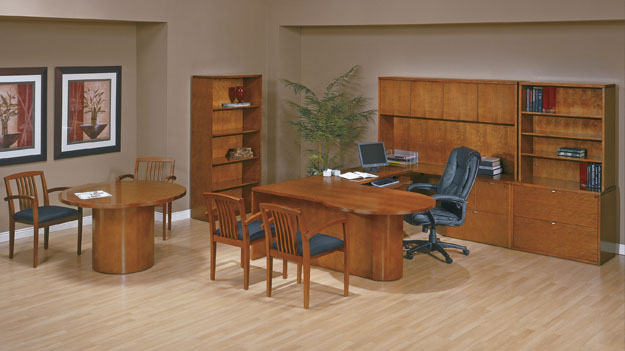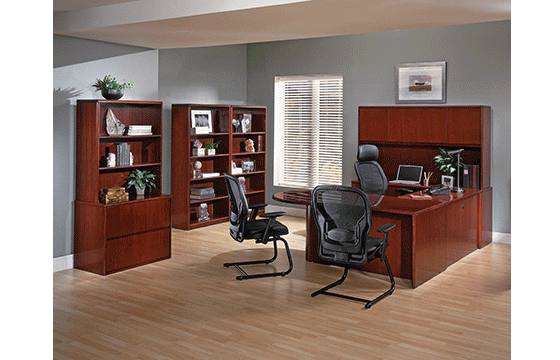Overview of How Solar Electricity Works
Sunlight is made up of tiny packets called photons. Photoelectric panels consist of many solar cells. The individual cell is designed with a positive and a negative layer to create an electric field, just like in a battery. As photons are absorbed in the cell, their energy causes electrons to become free, which produces electricity. Modular design of solar panels consists of photovoltaic cells ideally suited for distributed power generation.
Glossary of Air Conditioner Terms
Air conditioner: An appliance used for cooling, humidifying, dehumidifying or any other air treatment.
Air flow volume: The amount of air that is circulated through your home or room by the air conditioner. This is usually measured in cubic feet per minute or CFM. This is generally referred to as air circulation. Click on the central air conditioners link to read more about airflow in ductwork. AFUE: Abbreviation for Annual Fuel Utilization Efficiency. This is a measurement of the efficiency of a gas furnace. The higher this rating is the more efficient the furnace will be.Air handler: This is a device that moves and mixes air. They include fan blowers, coils, filters and expansion mechanisms. Generally, the air conditioner unit containing these components is referred to as the air handling unit and will be situated indoors. Click on the split systems link to learn more about air conditioner structure.
ARI: Abbreviation for the Air Conditioning and Refrigeration Institute
ASHRAE: Abbreviation for the American Society of Heating, Refrigeration and Air Conditioning Engineers
BTU: British thermal unit. This the measurement used to describe the cooling capacity, or amount of heat removed from the air, of the air conditioner. It is a measurement worked out according to the amount of cooling needed to lower the temperature of one pound of water by one Fahrenheit degree. One ton of cooling is the equivalent of 12,000 Btu's/h. Go to air conditioners for sale to learn more about the cooling capacity in relation to cooling requirements.
Capacity: This refers to the amount of cooling an air conditioner is capable of producing. It is normally measured Btu/h (Btu's per hour) or in tons. Charge: Air conditioners do not consume refrigerant, instead it is reused in a continuous cycle. This cycle is contained within a sealed structure. To charge an air conditioner is to add more refrigerant to replace the old and involves recovering the old refrigerant first. Compressor: This component is responsible for compressing the refrigerant and then pumping around the system. Condensate: This occurs mainly in the evaporator coils when the refrigerant evaporates into a vapor after heat is absorbed from room air. Warm room air is circulated here in order to cool it and it is this change in the temperature that results in vapor condensing into a liquid. Condenser coil: Tubing made of either copper or aluminum situated in the condenser or outdoor unit. Hot refrigerant gas is pumped through these coils from the condenser; the heat from the gas is dispersed by circulating air over the coils. The heat transfers from refrigerant to air and is released outside. This heat dissipation converts the refrigerant from a gas into a liquid. Condenser fan: There are two fans blades in every air conditioner. The condenser fan is for circulating the air over the condenser coils to dissipate the heat from the refrigerant. The other circulates the air over the evaporator coils and back into the room or building. Go to the 'Air conditioner parts' page to learn more about the different components involved in the functions of your cooling system. Damper: This is a plate that can be opened or closed to control and balance the airflow throughout the air handler's ductwork. This control is most obvious in systems with a 'zoning' option where cooling can be confined or regulated in individual rooms. Diffuser: This is a specialized grille with adjustable vents to direct the airflow from the air conditioner into the room. Some models come with a variety of adjustments some of which can distribute airflow in a particular pattern. An example would the 'shower' pattern of cool air. Drain pan: Also known as the condensate pan, this is a pan positioned at the bottom of the air handling unit underneath the evaporator coils. As the name suggests, it collects the condensate that drips from the evaporator coils. This is then drained out through a drain pipe or, as is the case with some portable units, is removed and emptied. Ductwork: This can basically be described as a large pipe that carries airflow throughout the building both to and from rooms. These can be used for both heating and cooling. Ductwork is commonly made of metal but flexible ductwork, known as mini-duct, is now also available. EER: Abbreviation for Energy Efficiency Ratio. This is a measurement of the efficiency of the cooling unit. It is calculated by comparing the Btu's to the watts of electricity consumed and the higher the efficiency rating the more efficient the unit. This benefits both environment and consumer as less energy is used which results in a lower operating costs. Expansion valve: This device controls the temperature and pressure of the refrigerant preventing damage to the compressor. Evaporator coil: Copper or aluminum tubing situated in the indoor or air handling unit. Liquid refrigerant from the condenser coils is pumped into these coils and evaporates into a vapor as it absorbs heat from warm room air. The air is circulated over the coils by the fan and, once relieved of its excess heat, is pumped back into the room. Filter: Material that removes unwanted particles, such as dust and pollen, from the air that passes through it. Click filters to learn more about these. Fuse: This is a small piece of metal found in all electrical circuits that is designed to melt when a surplus amount of electrical current passes through it. This is a preventative measure taken to avoid damage to the other components of the system. They are commonly found in electrical plugs.
Heat pump: This is a compression system using arefrigerant that can be used for both heating and cooling.
HVAC: Heating, Ventilating, and Air Conditioning. This is an example of a system that would use a heat pump.
NEC: Abbreviation for National Energy Council or National Electric Code.
NEMA: Abbreviation for the National Electrical Manufacturing Association.
Package unit: A term to describe an air conditioner system where all the components are contained within one unit. Click on unit air conditioners to learn more.
Refrigerant: This is a liquid with an extremely low boiling point of minus 21.7 degrees F. This gives it unique cooling qualities. Because it responds well to low-pressure conditions and condenses easily it is easy to change the temperature of the substance which means it is easy to cool. When it is cooled it absorbs heat quickly and effectively. Click on the automotive AC link to learn more about the dangers of refrigerant.
Refrigerant charge: This is the amount of refrigerant required by a particular system.
SEER: Abbreviation for Seasonal Energy Efficiency Ratio. This is the measurement used to rate the efficiency for a cooling system that can also be used for heating (i.e. containing a heat pump. The higher the SEER, the more efficient the system.
Self-contained system: Similar to a package unit where all components are contained within on cabinet. Portable and window air conditioners are examples of such systems.Split-system: This is an air conditioner that has been split into two units. The outdoor unit contains the condenser and compressor, the indoor unit contains the evaporator coil. Click here to read more on these.
Ton: Another unit used to measure the cooling capacity of an air conditioner. One ton of cooling is equal to 12,000 Btu's/h.
Refrigeration Technologies Overview
Vapor/Compression
The refrigerant vapor is compressed and pumped into the condenser (heat exchanger) by a compressor. Compressing the gas causes the temperature of the gas to increase. The gas is now at a temperature higher than that of the surrounding air, the heat flows from the condenser and the gas becomes cooler. Removing the heat from the condenser allows the gas to turn into a liquid.
The liquid refrigerant is still under pressure as it flows to the expansion valve (or capillary tube). The expansion valve meters the liquid refrigerant into the evaporator (heat exchanger) to maintain a low-pressure condition in the evaporator. The low pressure in the evaporator causes the liquid to boil into a gas. As the liquid changes into a gas (boils) it absorbs heat (refrigerating affect).
Absorption System
With the application of heat at the generator, ammonia vapor is driven from the solution. This hot vapor rises into the separator and a portion of the water condenses and flows by gravity into the absorber. The hot ammonia vapor continues to rise into the condenser where it gives up its heat to the surrounding air and condenses into a liquid. The liquid ammonia enters by gravity into the evaporator, where it is mixed with hydrogen gas. Circulation of hydrogen gas causes a reduction in pressure within the evaporator. The low pressure causes the ammonia liquid to boil into a gas (evaporating) and absorbing heat in the process (refrigerating effect). The mixture of hydrogen/ammonia vapor that's carrying the absorbed heat is now drawn by gravity into-the absorber. Because the water from the separator has a greater affinity for ammonia, it separates from the hydrogen gas. The hydrogen gas being very light rises and returns to the generator to start the cycle again. Any technology that moves heat from a cooler area to warmer area can be referred to as a "Heat Pump". A popular concept of a heat pump is an appliance that cools in the summer and heats in the winter. In summertime heat is pumped from the cooler indoors to the warmer outdoors, and in the winter time heat is pumped from the cooler outdoors to the warmer indoors. (Think of pumping water up hill, energy is required to power a device to lift the water). Air conditioners and refrigerators are appliances that are technically heat pumps.
In order to heat and cool the same area a four-way valve is required to reverse the flow of refrigerant through the heat exchangers. Any technology that moves heat from a warmer area to a cooler area is referred to as a heat exchanger. (Think of water flowing downhill, no energy is required to flow water down hill, just a tube to contain the water) Heat exchangers create larger surfaces areas to minimize the resistance to heat flow. (Just like water flowing in a pipe, the larger the pipe the better the water flows, smaller pipes require higher pressure and smaller heat exchangers require higher temperature) Heat exchangers use air, water, and other fluids to transport the heat from one area to another or as an efficient means of spreading the heat over larger surface areas for dissipation. A car engine is a good example, it uses water/glycol to remove heat from the cylinder block then transport the heat to the radiator. The radiator uses the water/glycol to spread the heat over a large surface area so the air flowing through the radiator can efficiently pick up the heat and carry it away. Even though a lot of energy is used on the engine's water pump and fan to move both the water/glycol and air, there is no heat pump or refrigeration effect; heat is flowing from warm to cold.
A heat pipe is also a heat exchanger.
Heat sink and heat exchanger describe the same process, transferring heat from a warmer area to a cooler area. The term heat sink is more popular describing an all-metal heat exchanger used to absorb and conduct heat without the use of fluids. Fans are sometimes used to convect (disburse) heat off the heat exchanger. Heat is a form of energy just like electricity, solar (light), and wind (pressure). Heat can be converted into electricity, light, and pressure (force). Heat describes the amount of energy and is popularly expressed in BTU or Calories. Temperature describes the "quality" or "level" of the heat. One Btu is defined as the energy required to raise one pound of water one degree Fahrenheit. Consider this analogy, heat is analogous to a volume of water, temperature is analogous to the water pressure, and water flow rate, gallons per hour is analogous to heat flow rate, BTUs per hour. In effect a water pump is similar to a heat pump. To pump a larger volume of heat or water, more energy is required, pumping water against higher pressures and pumping heat against higher temperatures require more energy. Cooling and heating can also be accomplished by absorbing heat through a chemical process. Ice is use to cool a beverage or food by absorbing heat as it melts (a solid absorbs heat to become a liquid). A liquid also absorbs heat to become a gas. The reverse is also true; to convert gas to liquid will release heat, and liquid to solid releases heat. Changing the phases from liquid to vapor and from vapor to liquid is how your typical heat pumps operate (vapor/compression technology).
To sum up:
1.Energy is required to power a device so that heat can be "pumped" from a cold area to a warm area.
2.To cool a room (air condition) or a beverage (refrigeration) requires that you remove heat or absorb it. Conversely to heat something requires that you add heat or energy.
3.Energy is not required to move heat from a warm area to a cold area. Energy can be used to help the heat transfer process by powering fans and/or water pumps to assist in the conduction and convection of heat.
4.Ice can be used as a cooling process but it takes energy to produce the ice (there is no free ride).
5.Technically cold does not escape your refrigerator, heat gets in.
6.An electrical or fuel heater is not a heat pump because it is not pumping heat. Heat is created through energy conversion or chemical reaction.
A thermoelectric device is created when two dissimilar materials form a junction. If there is a temperature difference between the two dissimilar materials, electricity will flow (thermocouple effect); conversely, if a voltage is applied, heat will flow from one end of the junction to the other, resulting in one side becoming colder and the other side warmer (Peltier effect and electron hole theory).
A unique feature is that by simply reversing the polarity (reversing the plug), you can reverse the flow of heat, thereby changing from a refrigerating mode to an efficient heating mode. For example, a power input of 24 watts can give you 59 watts of heating. These modules will operate on a low voltage, high current DC source. Through the use of a simple power supply, the modules can operate on any AC source.
There are no moving parts that will wear or break, nor gases or corrosive liquids that can leak. Thermoelectric modules offer a very reliable means of refrigeration for very small heat loads, however, efficiency in the refrigeration mode is very low. Thermoelectric is not appropriate for solar cooling applications. Vapor/Compression System
Advantages
1.Capable of large refrigerating loads at lower initial purchase and operating cost.
2.Very efficient
3.Very compact system for small to very large heat loads
4.Cycle can be reversed for heat pump operation
Disadvantages
1.Parts can wear out
2.Noise
3.Potential refrigerant leaks
4.Operates in limited orientations
Thermoelectric Refrigeration
Advantages
1.Light weight and compact for very small heat loads.
2.No moving parts, eliminating vibration, noise, and problems of wear.
3.Reversing the direction of current transforms the cooling unit into a heater.
4.Operates in any orientation. Not affected by gravity or vibration
5.Very low cost device for cooling in small appliances
6.Precision temperature control capability
Disadvantages
1.Limited to very small refrigeration loads due to cost.
2.Not suitable for solar due to poor efficiency
3.Heat sinks required to conduct heat to and from the thermoelectric modules become very heavy and bulky as the refrigeration capacity increases.
Absorption System
Advantages
1.No moving parts
2.No vibration or noise on small systems
3.Small systems can operate without electricity using only heat, large systems require power for chemical pumps
4.Can make use of waste heat
Disadvantages
1.Potential refrigerant leaks
2.Operates under limited vibration and orientations
3.Complicated and difficult to service and repair.
4.Stalls in hot ambient.
5.Very bulky
6.Poor efficiency
LED Lighting Products
What are you waiting for? It's time to go GREEN!
What IS LED?
L.E.D. means light emitting diode. LED is a solid-state device and does not require heating of a filament to create light.
Why switch to LED light?
Among the many advantages of LED lighting are:
•Low power consumption
•Environmentally friendly
•Long life expectancy
•Robustness (no filament)
•Variety of colors available
•Can be designed so that damage to one LED does not affect the others
•LEDs are expected to significantly outperform both incandescent and fluourescent.
LED Glossary
Amp; (Ampere): The basic unit of electric current adopted under the System International Unites; "a typical household circuit carries 15 to 50 amps."
Ballast: A device used to operate fluorescent and HID lamps. The ballast provides the necessary starting voltage, while limiting and regulating the lamp current during operation.
Bulb Base: The part of the bulb that is used to set it into place and to make contact with electricity. There are many types and sizes. Most common are E26/27, USA and European standard household size, or medium base as it often is called. The 26 or 27 equates to the diameter measurement in millimeters of the threads of a screw-in bulb base. This type of bulb also includes the PAR 20, PAR 30 and PAR38 types, and a few others. There are MR16 and MR11 type base LED bulbs as well as GU10s.
Candela: Unit of luminous intensity, describing the intensity of a light source in a specific direction.
Compact Fluorescent: A small fluorescent lamp that is often used as an alternative to incandescent lighting. The lamp life is about 10 times longer than incandescent lamps and is 3-4 times more efficacious; also called PL, Twin-Tube, CFL, or BIAX lamps.
Diffuser: A translucent piece of glass or plastic sheet that shields the light source in a fixture. The light transmitted throughout the diffuser will be redirected and scattered.
Fluorescent Lamp: A light source consisting of a tube filled with argon, along with krypton or other inert gas. When electrical current is applied, the resulting arc emits ultraviolet radiation that excites the phosphors inside the lamp wall, causing them to radiate visible light.
HID; (high-intensity discharge): Generic term describing mercury vapor, metal halide, high-pressure sodium, and (informally) low-pressure sodium light sources and luminaries.
Kelvin (K)/ Kelvin Color Temperature: is a measure of the color of a light source relative to a black body at a particular temperature expressed in degrees Kelvin (K). Incandescent lights have a low color temperature (approximately 2800K) and have a red-yellowish tone; daylight has a high color temperature (approximately 6000K) and appears bluish (the most popular fluorescent light, Cool White, is rated at 4100K). Lamps with color temperatures below 5000K tend to be more yellows/reds, lamps rated between 5000 and 6000K are viewed as white, while lamps above 6000K tend to have a blue cast.
Luminance: A photometric term that quantifies brightness of a light source or of an illuminated surface that reflects light. It is expressed as foot lamberts (English units) or candelas per square meter (Metric units).
L.E.D.: LED means light emitting diode. LED is a solid state device and do not require heating of a filament to create light. Rather, electricity is passed through a chemical compound that is excited and as a result, generates light.
LEDs are not bulbs or lamps in the true sense of the word and application. LEDs require a lot of work to make them ready to be used by the consumer. They need to be placed on a circuit board or other material which will allow electricity to pass through it at a specific voltage and current, and with components required to operate them at specific voltages such as 12vdc, 24vdc or 120vac. They do not come ready to plug into a 12volt or 120 volt power source.
MR: (Multifaceted Reflector); exp. MR-16: A low-voltage quartz reflector lamp, only 2" in diameter. Typically the lamp and reflector is one unit, which directs a sharp, precise beam of light. PAR LAMP: A parabolic aluminized reflector lamp. An incandescent, metal halide or compact fluorescent lamp used to redirect light from the source using a parabolic reflector. Lamps are available with flood or spot distributions.
Photocell: A light sensing device used to control luminaries and dimmers in response to detected light levels.
Retrofit: Refers to upgrading a fixture, room, or building by installing new parts or equipment.
Source:
www.bestechenergy.com ...





